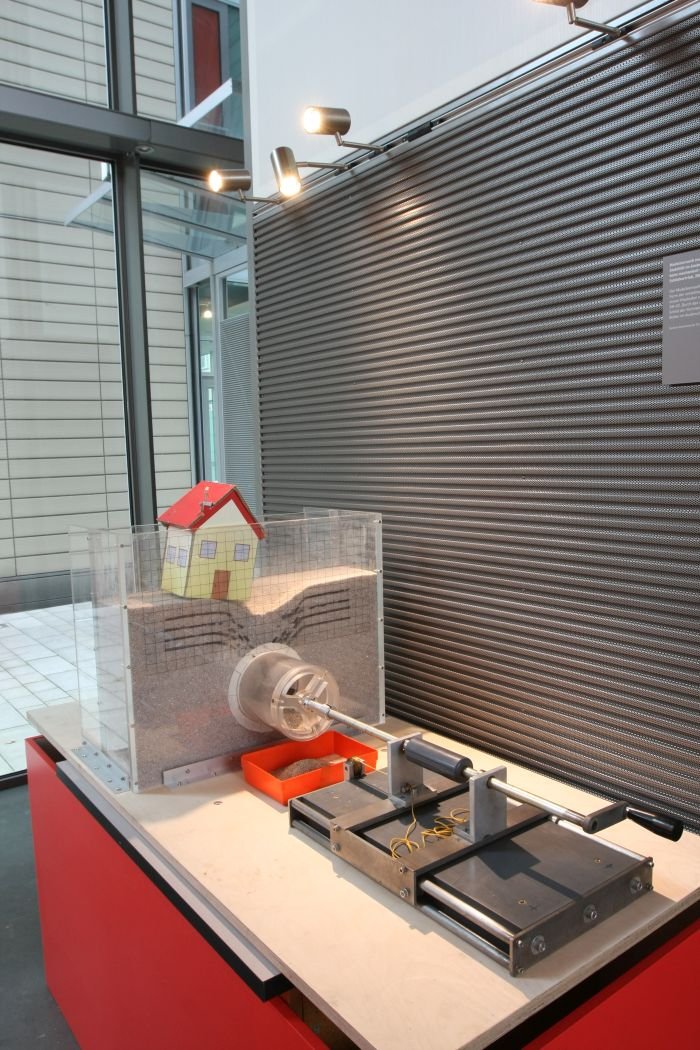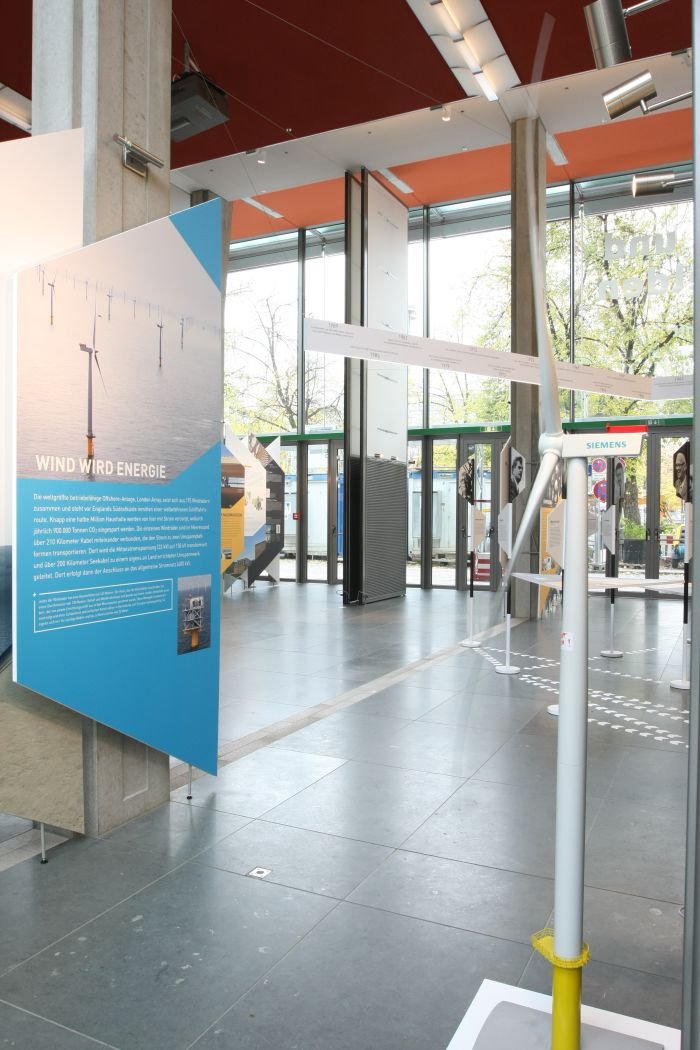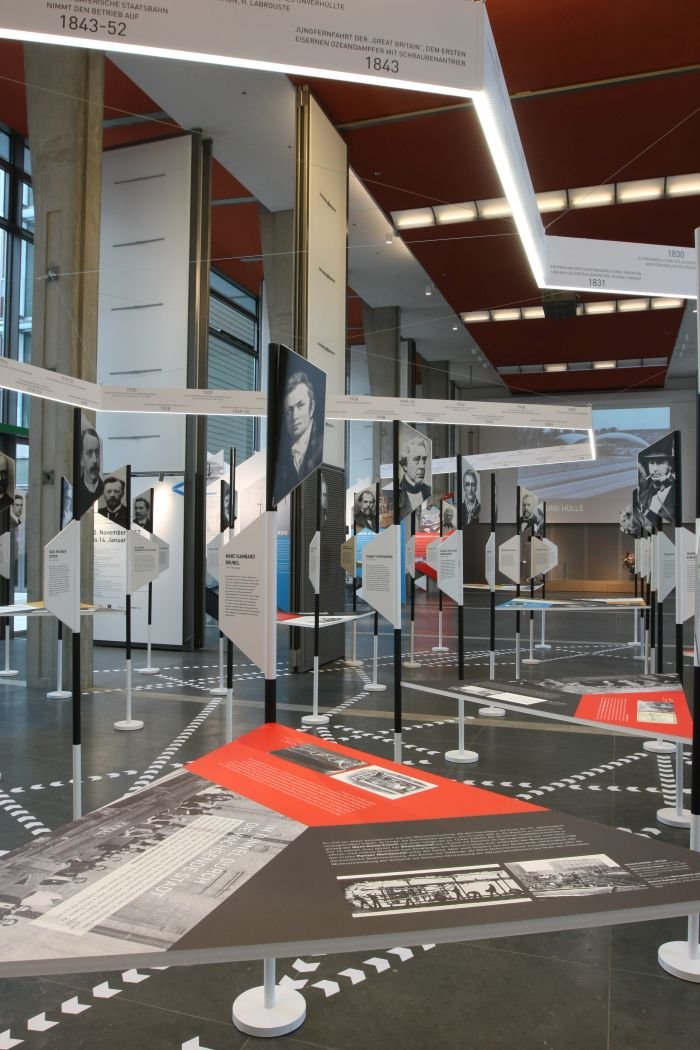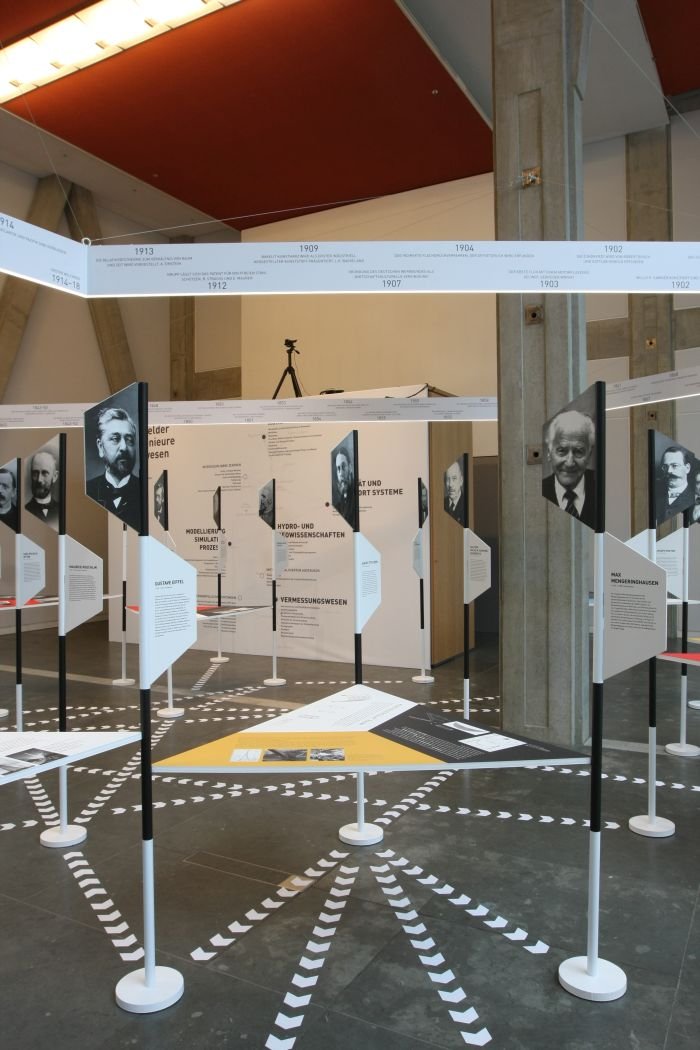Back in the day one of the joys of reading the British Yellow Pages was the entry for Boring: "See Civil Engineers"*
Oh how we laughed! And still do!
Partly to counter such negative associations, partly to explain what Civil Engineers do, and partly to explain just how fundamentally that what Civil Engineers do has contributed to our contemporary society, and the multitude of possibilities available to us, whether we choose to take them or not, the Oskar von Miller Forum Munich is staging the exhibition Visionäre und Alltagshelden. Ingenieure – Bauen – Zukunft.
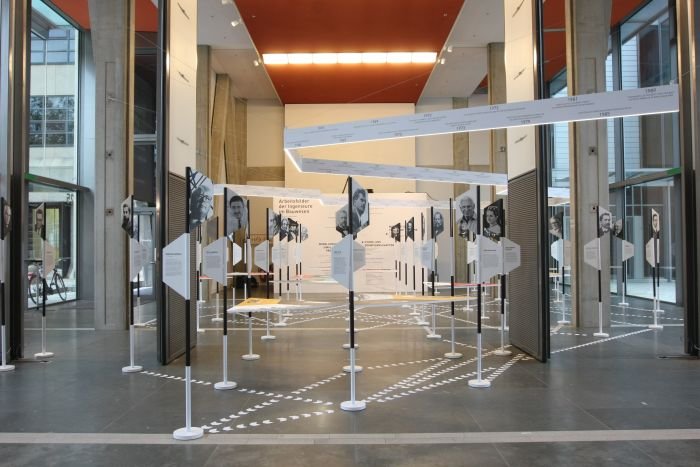
Initiated by the Oskar von Miller Forum and realised in conjunction with the M:AI - Museum für Architektur und Ingenieurkunst NRW, as curator Cornelia Hellstern explains one inspiration, of several, for the exhibition was an open letter published in 2006 in the industry magazine Bautechnik which, reflecting on the current state and future perspectives of the profession, noted, "although the key role of Civil Engineers is widely recognised, the current reputation of the profession is relatively low", and that, amongst other recommendations, "Civil Engineers must remain aware of the uniqueness of their profession, and spread the word"1
Or put another way, the image of the Civil Engineer as the dry technician, the statics freak, the Borer, is well established, yet where would our society be today without Civil Engineers? Where would our transport systems be without Civil Engineers, where would our energy networks, our water and sanitation systems and for all where would architecture be today without the Civil Engineer?
Which, yes, sounds like the introduction to the sort of mock infotainment film that would be shown at Springfield Elementary; yet, while as an exhibition Visionäre und Alltagshelden. Ingenieure – Bauen – Zukunft [Visionaries and Everyday Heroes. Engineers – Build – Future], features many well known faces, that of Troy Mcclure isn't one of them.
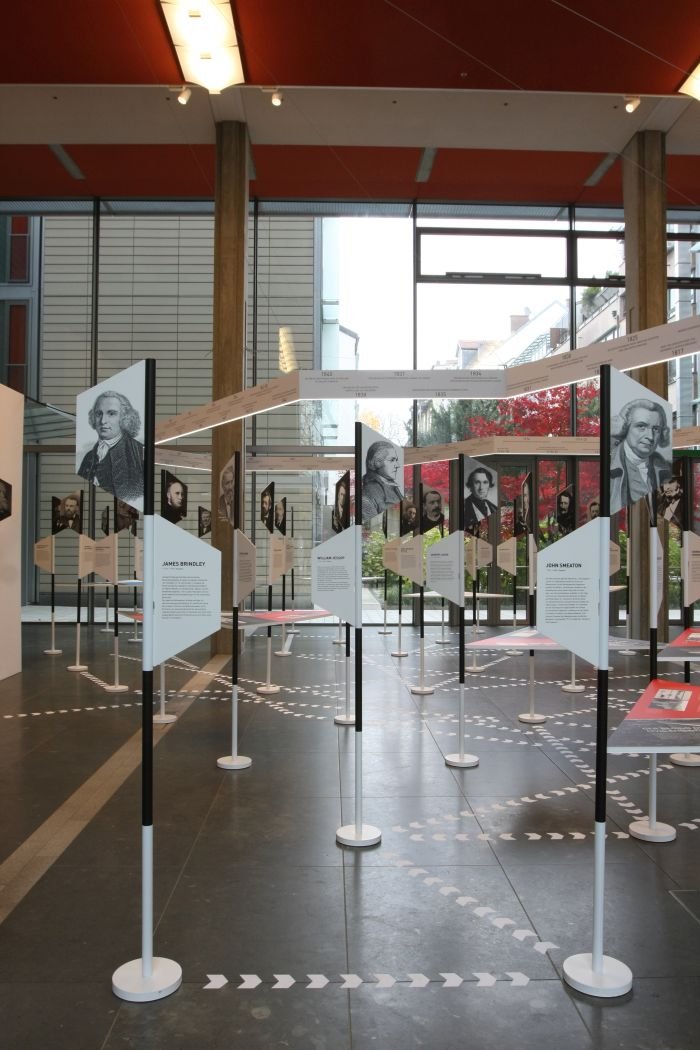
Divided into two independent yet inextricably linked sections Visionäre und Alltagshelden, effectively, or perhaps better put, logically, opens with a history of the Civil Engineering profession as told through the careers and contributions of some of its most important protagonists.
From the formal beginnings of civil engineering with James Brindley, who developed and constructed England's canal network, and his 18th century colleague John Smeaton, who is credited with first coining the term "Civil Engineer", Visionäre und Alltagshelden moves sprightly on over the likes of Isambard Kingdom Brunel, Louis Favre, Gustave Eiffel, and on to more contemporary contemporaries including Richard Buckminster Fuller and Pier Luigi Nervi, passing on the way the Oskar von Miller Forum's eponym, himself a pioneer in terms of electrical engineering and hydropower, in addition to founding the Deutsches Museum, one of the world's largest science and technology museums.
Presented as connections, either directly between engineers or conceptually in terms of the development of ideas and positions, the exhibition design sees trios of engineers grouped around a thematic island concerned with a specific area within one of the exhibitions three central themes: Enclosure + Space, Water + Energy, Mobility + Transport.
Keeping with the concept of connections the exhibition scenography takes its inspiration from what the Oskar von Miller forum refer to as the origins of Civil Engineering: Surveying. The exhibition layout being formally modelled on Otto Gelpke's 1870 survey sketches for the Gotthard Tunnel, the engineers' biographies presented on poles akin to the surveyor's ranging rod.
Over the engineers, and visitors, heads runs a timeline which documents the wider social, political and technical developments of the age(s) from the Montgolfier's maiden balloon flight in 1783 until Tim Berners Lee development of the World Wide Web in 1989.
And since then? Nothing?
Of course, calm down, the lack of more recent events simply mirroring the exhibition concept which presents only those engineers who are no longer practising, thereby neatly underscoring that it is a celebration of the profession, not its protagonists.
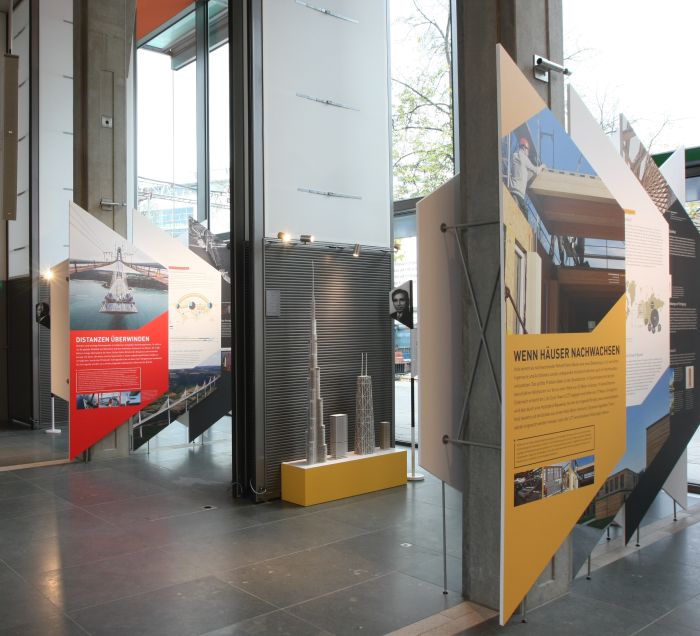
Having explored the past Visionäre und Alltagshelden moves on to look at the here and now and future as exemplified by contemporary engineering projects divided into themes such as wind power, transportation or bridge building, the later including models of the Severinsbrücke and Mülheimer Brücke in Cologne and Theodor-Heuss-Brücke Düsseldorf, each realised by a different architect, but all in cooperation with the engineer Fritz Leonhardt.
Then there is architecture itself where Civil Engineers are in many respects the unsung heroes, without whom many, all? architectural visions would have remained just such. Among the protagonists presented in Visionäre und Alltagshelden one finds, William Le Baron Jenney who developed the steel frame skeleton and thereby the skyscraper; Frei Otto who in a local Munich context was responsible for the fabled floating roof of the city's Olympic Stadium; and Ulrich Müther whose thin walled constructions not only help exemplify how civil engineers have influenced and enabled architectural form-giving, but whose constructions are still the best reason for visiting the German Ostsee coast: You go relax on the beach mother, we're off to look at bus shelters.
In addition Visionäre und Alltagshelden also links very nicely to the exhibition SOS Brutalism – Save the Concrete Monsters at the Deutsches Architekturmuseum Frankfurt; not only in that the role of the Civil Engineer in Brutalist construction is in many respects as clear and exposed as the structural elements, but specifically, the stand at Gala Fairydean's stadium, which we highlighted, was a joint cooperation between the architect Peter Womersley and the engineer Ove Arup, who also stands behind works such as Coventry Cathedral, Centre Georges Pompidou Paris & Sydney Opera House.
As we say, without the Civil Engineer how many architectural visions would still be just that?
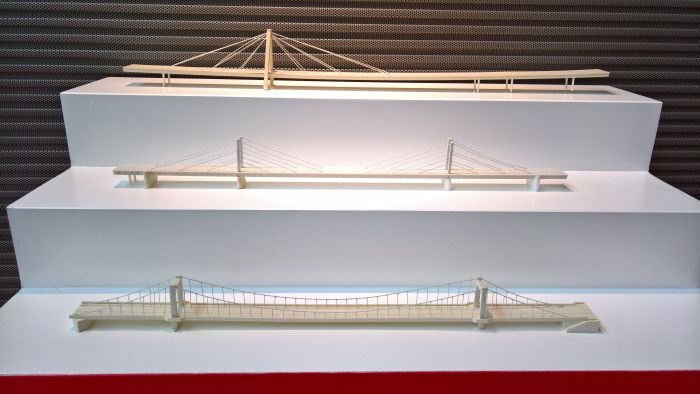
Presenting a lot of information in a relatively compact space and at a lively tempo, Visionäre und Alltagshelden at no times feels cramped nor hurried; one has the space and time to consider what is being presented at your own pace, to follow the connections and thus develop your own impression(s) of profession.
If we did have one "complaint" it would be that it is a monolingual, German, exhibition; whereby at least in terms of the engineer profiles the bilingual option would not only appear straightforward, but also desirable given the number of French, English, Italian, etc, engineers presented. And as a potential future touring exhibition it is just as valid internationally as nationally. However at the moment the plans are only to show it in Germany, and so such considerations are therefore theoretical.
And aside from such considerations Visionäre und Alltagshelden is an engaging, interesting, well conceived and very nicely realised exhibition which neatly demonstrates the historic and future role, function and importance of Civil Engineers.
And that they are anything but Boring.
Visionäre und Alltagshelden. Ingenieure – Bauen – Zukunft runs at the Oskar von Miller Forum, Oskar-von-Miller-Ring 25, 80333 Munich until Sunday January 14th.
* Boring as in "Drilling", not "Dull". Obviously
1 Zwischenruf: Verantwortung und Ansehen der Bauingenieure - ein Aufruf, Bautechnik Vol 83, Heft 10, s 737 ff., 2006
Full details, including information on the accompanying fringe programme can be found at www.oskarvonmillerforum.de
